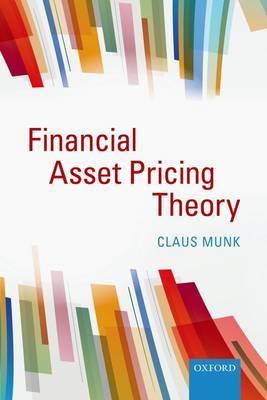Financial Asset Pricing Theory

Financial Asset Pricing Theory
deflator which provides a link between optimal consumption and asset prices that leads to the Consumption-based Capital Asset Pricing Model (CCAPM). A simple version of the CCAPM cannot explain various stylized asset pricing facts, but these asset pricing 'puzzles' can be resolved by a number of recent extensions
involving habit formation, recursive utility, multiple consumption goods, and long-run consumption risks. Other valuation techniques and modelling approaches (such as factor models, term structure models, risk-neutral valuation, and option pricing models) are explained and related to state-price deflators.
The book will serve as a textbook for an advanced course in theoretical financial economics in a PhD or a quantitative Master of Science program. It will also be a useful reference book for researchers and finance professionals. The presentation in the book balances formal mathematical modelling and economic intuition and understanding. Both discrete-time and continuous-time models are covered. The necessary concepts and techniques concerning stochastic processes are carefully explained in a
separate chapter so that only limited previous exposure to dynamic finance models is required.
PRP: 471.47 Lei
Acesta este Prețul Recomandat de Producător. Prețul de vânzare al produsului este afișat mai jos.
424.32Lei
424.32Lei
471.47 LeiIndisponibil
Descrierea produsului
deflator which provides a link between optimal consumption and asset prices that leads to the Consumption-based Capital Asset Pricing Model (CCAPM). A simple version of the CCAPM cannot explain various stylized asset pricing facts, but these asset pricing 'puzzles' can be resolved by a number of recent extensions
involving habit formation, recursive utility, multiple consumption goods, and long-run consumption risks. Other valuation techniques and modelling approaches (such as factor models, term structure models, risk-neutral valuation, and option pricing models) are explained and related to state-price deflators.
The book will serve as a textbook for an advanced course in theoretical financial economics in a PhD or a quantitative Master of Science program. It will also be a useful reference book for researchers and finance professionals. The presentation in the book balances formal mathematical modelling and economic intuition and understanding. Both discrete-time and continuous-time models are covered. The necessary concepts and techniques concerning stochastic processes are carefully explained in a
separate chapter so that only limited previous exposure to dynamic finance models is required.
Detaliile produsului










